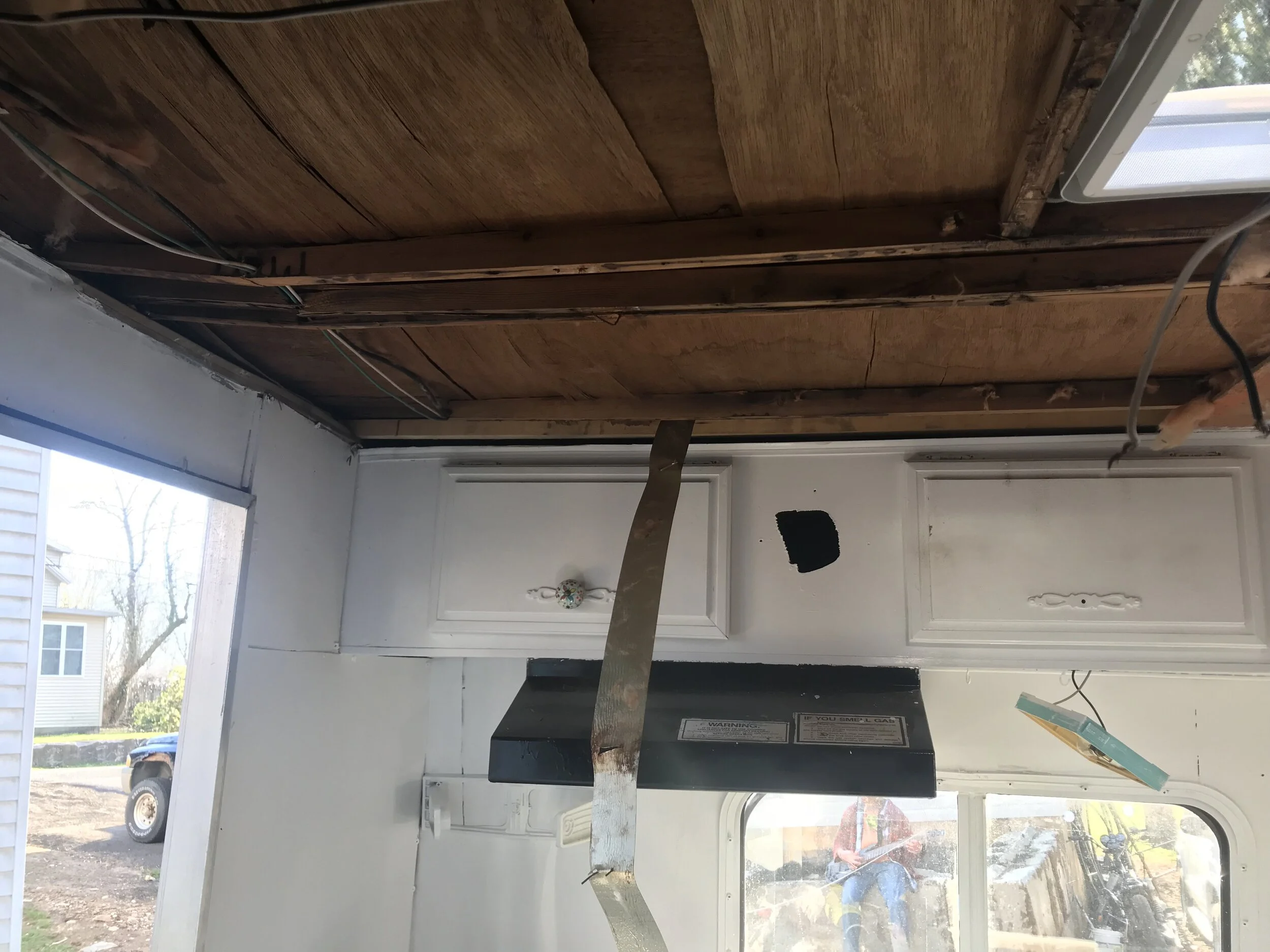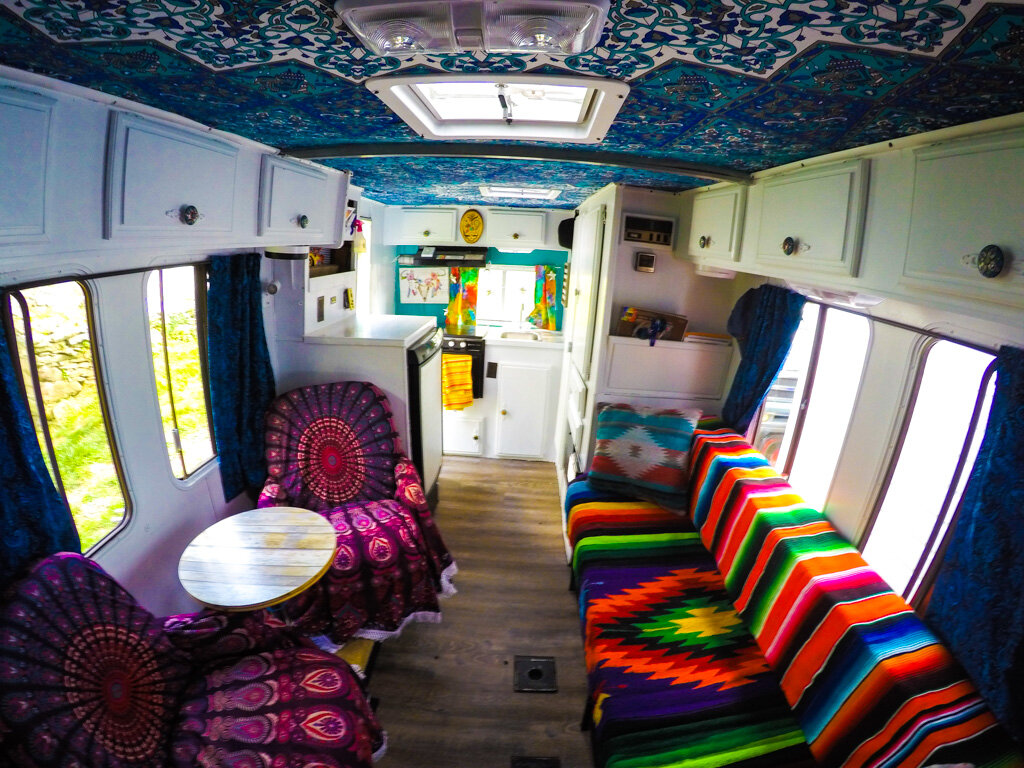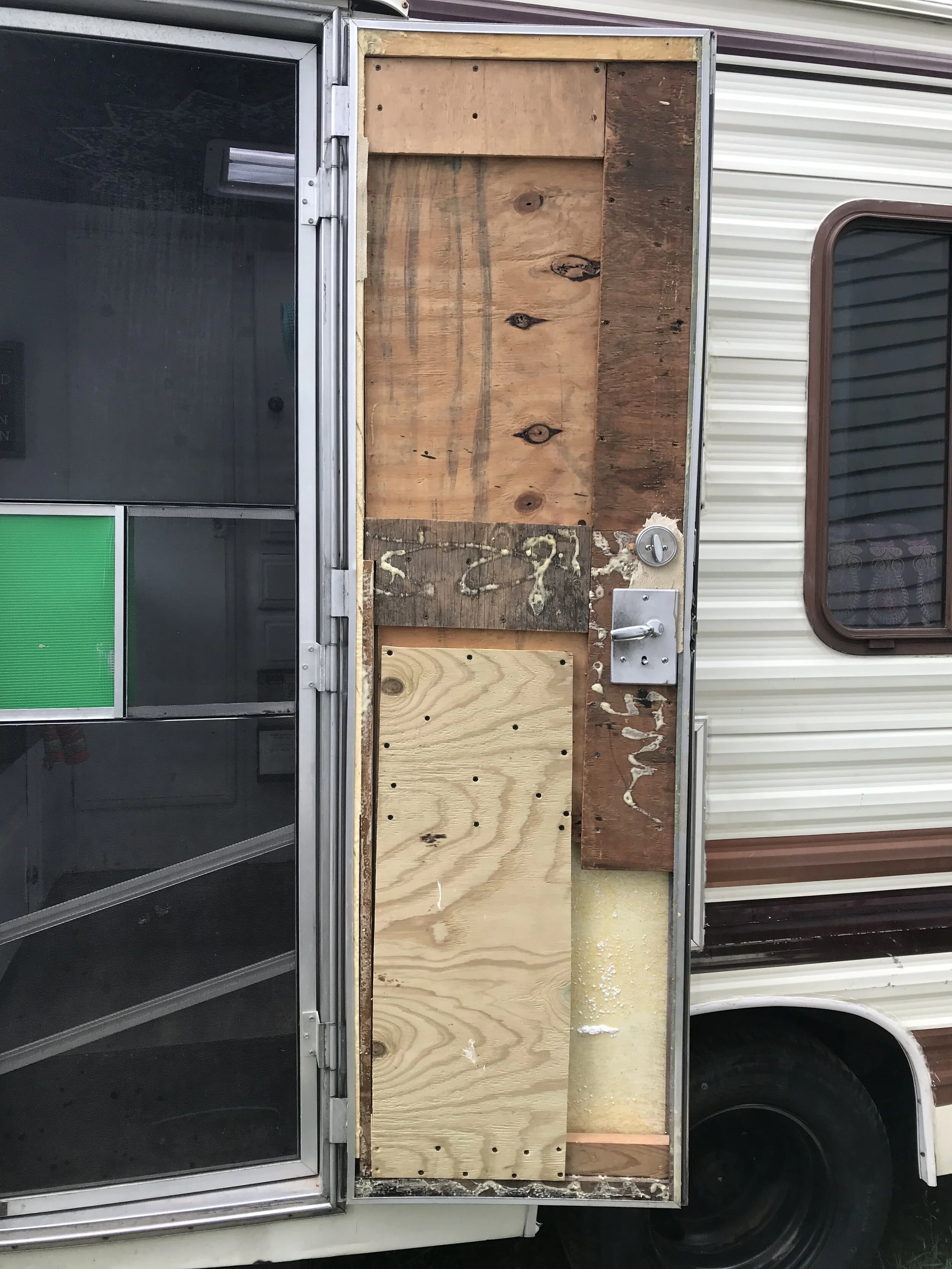When buying a used RV for the first time, the options can be a little overwhelming. Once you consider size, class, pricing, and condition - making a decision involves a lot of guesswork, and hoping that the used camper you’re buying is a good investment.
(If you're unsure of where to start when considering a used RV - check out this used RV guide I wrote!)
In October 2017, we bought a 1985 Toyota Coachmen mini motorhome for $2900, and foolishly thought that since the previous owners had painted the interior - that it would be in great shape. But upon further inspection of our new used camper - we found out that our new “home” had a lot more issues than we originally anticipated.
Since we just finished up 20,000 miles of travel, I can say that things ended up working out well for us… however, we learned some important lessons about buying a used RV on the way.
As always, I want to share my knowledge so you can avoid some of the costly mistakes that we, and others before us have made when buying a used RV for the first time.
Here’s what I wish I knew before buying an RV!
Used RVs Almost Always Have Water Damage
I’m just going to dive right in and bring up the #1 issue I hear coming from used motorhome owners: RV water damage! This problem is so common among used RVs that you can pretty much bank on finding at least a small amount of water damage in any used camper that you look at. This is especially true if you’re buying it from a private owner that didn’t have covered storage or lived in an area that gets a lot of snow.
When people think about RV water damage, most assume it stops at a leaking roof - however, most of the time that’s just the beginning. While checking out a used RV - look for bulging walls and staining or ripples in wallpaper or other materials. If you’re considering a Class C RV with an over-cab bed… check this area extra thoroughly. Lift up the mattress and check for mold, and check around the windows and trim. Additionally, if you can, check out the actual RV roof and the outer shell of the camper. If you see any holes or tears chances are there’s a lot of RV water damage hiding beneath the surface.
Our personal experience with water damage was pretty extensive. We were told that the RV was water tight, and SURPRISE! It wasn’t. Half of our ceiling was rotted out, and we needed to replace the cab-over bed. Since we were in a hurry to hit the road, we did what we could to remedy the problems and kept moving with our RV renovation.
RV water damage repair costs can range from something as small as investing in the best RV roof sealant (we recommend Kool Seal Elastomeric Paint and Eternabond Tape) - or as expensive as needing to gut your entire new-used camper.
I’m not pointing this out to discourage you from buying a used RV… I’ve just seen one too many people post about their new home turning out to be a money pit. Do yourself a favor and spend the extra time checking out your purchase before you make it.
Our fully renovated used RV featuring our new (and broken) Dometic refrigerator that cost us over $800! RV appliances are expensive!
New RV Appliances Are Very Expensive
Another thing that would have been helpful to know before buying a used RV is that new RV appliances are SO EXPENSIVE. Especially the refrigerator. When we bought our RV, we knew the fridge was broken, but we didn’t realize how expensive the replacement would be.
Motorhome refrigerators cost from hundreds to THOUSANDS of dollars. We bought a Dometic 2-way fridge (propane and 120V) to replace the one that we had. It was only a mini fridge (think dorm room size with tiny freezer compartment inside) and cost us $800! Since we ordered it online and had it shipped… it was damaged in transit and never worked properly. Luckily we bought our motorhome fridge from Dometic and it has a great warranty. Unfortunately, since we were traveling, getting it fixed was impossible without having to stay in one place for a long time.
In our next build, we will be buying a Dometic 12-volt fridge to run off of our house batteries (fed by solar panels) These are still pricey, but safer (no propane!) and less complicated than a propane absorption fridge.
Additionally, RV air conditioners (we paid over $500 for a new one!), ovens, and other extras your used RV might include are not cheap either. I recommend taking the extra time to plug in the RV and ensure that the electrical system and all appliances work before you hand over any cash.
Both New and Used RVs are Made With Low Quality Materials
Another thing I wish I knew before buying my first used RV is that they aren’t always made out of the best materials. Since we were in the market for an RV that was both a Toyota and under $5000, we were limited to old models. While the RV looked solid enough when we picked it up - after tearing into it, we were surprised to find out that our sweet little adventuremobile was basically made of toothpicks and cardboard. Since it’s a 33-year-old used camper that’s still functional… it obviously it held up fine enough. However, knowing how little stood between us and other cars on the road made me nervous to be anywhere other than the cab while driving.
The inside of our door was made of styrofoam and was cracked in half when we bought it. Our RV is old, but most RV doors are still made of lightweight (nondurable) materials.
Aside from the flimsy framework of our RV - everything inside was also made out of sub-par materials and things started falling apart as soon as we hit the road. By that time, we knew that we’d gotten ourselves into… so every time something fell apart we just laughed and did our best to fix it.
Since we were on a tight schedule to hit the road… we didn’t have time to gut our RV and build from the ground up. But if we ever buy another used RV to live in full-time, this would be our plan. Which brings me to my next point…
RVs are Not Built for Full-Time RVing
Most RVs are not made to live in full-time. Even when buying a new RV - there are very few rated for full-time living. As previously mentioned these motorhomes aren’t made of the most durable materials, so with heavy use things will start to break down faster than if you were just a weekend warrior camper. One of the main reasons for this is that these low quality materials are light weight and cheaper to build with.
That being said - there are thousands of people that live in both new and used RVs full-time (including us!). If you plan to buy a new or used RV to use as your primary residence, it’s a good idea to have some funds set aside for RV repair costs.
Additionally, if long-term or full-time road living is what you’re interested in - I’d just as soon buy a bus or van to build out so I know that everything is built to last and set up just how we want it. (One of these will hopefully be our next project!) This could also be achieved by buying a used RV to gut and rebuild, which is what our friends from slowcarfasthome.com did.
To Sum Up My Feelings about Used RVs...
I didn’t bring up these points to discourage anyone from buying a used RV, I just wanted to share the information I wish I had known before staring our journey in motor-homeownership. If given the choice, there’s very few things we would have done differently in our RV renovation process.
We still think that the Toyota RV is the most perfect motorhome in terms of size, fuel economy, capability and overall coolness. But going forward, we’ll use all of this knowledge to guide our next project - whatever that may be.
So, if you’re in the market for a used RV - congratulations! Buying and renovating our used camper was fun and a lot of work, but very worth it.
Are there any things you wish you knew before buying a used RV?



